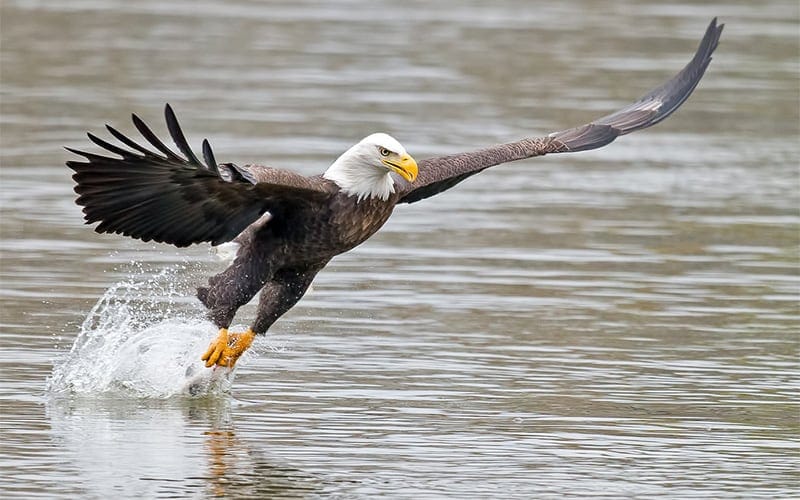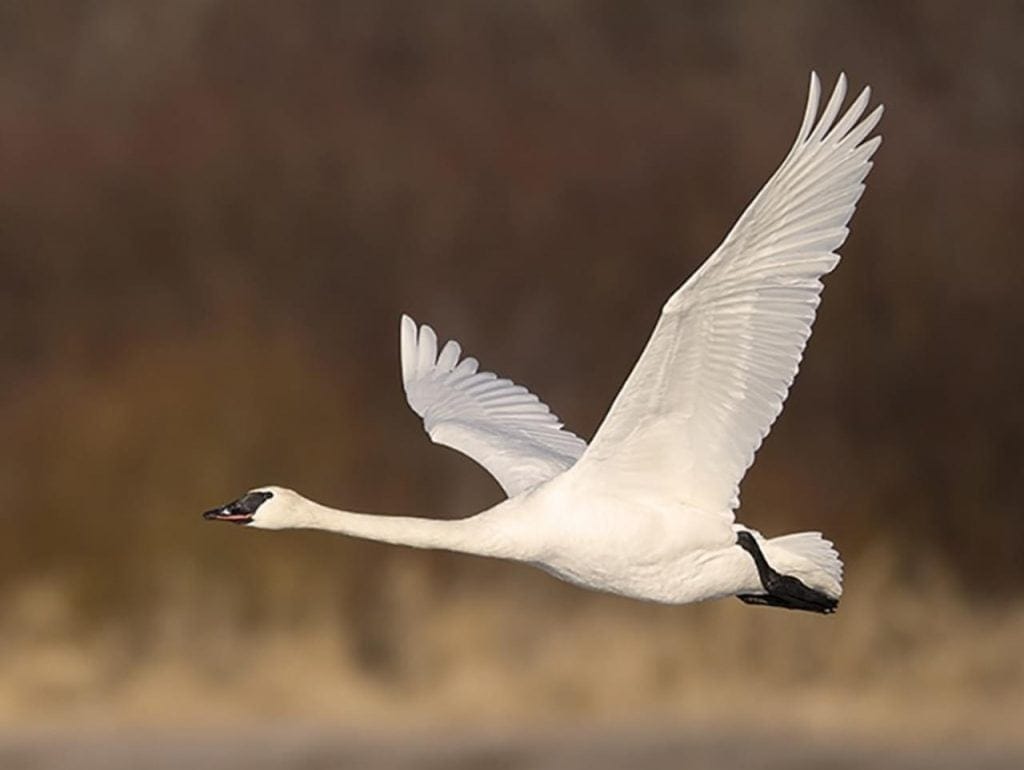Winter Birding along the Mississippi by Ramona Puskar, TNI education director
Winter is the time of year when snuggling up under a blanket next to the fireplace sounds like the perfect pastime, but let me challenge you to get bundled up, step outside and see what is going on around you. During spring, summer and fall, it is easy to see the beauty of the world around us. In the winter though, all we see is the drab browns and maybe some white snow, if we are lucky. What could there possibly be out there that would be exciting to see?
Enter the large migratory birds! Here on the Mississippi River, we have large bird species that migrate to the open waters of our major riverways. There are Bald Eagles coming down from the north looking for open water and plenty of fish, trumpeter swans – one of the most majestic birds I have ever seen, and of course our year-round residents; turkey vultures, red-tailed hawks, coopers hawks and many more. All of which are much easier to see in the winter without leaves on the trees. This post will serve as a guide for how to identify the migratory species as well as some common places to look for them.
Bald Eagle – Haliaeetus leucocephalus
The Bald Eagle is the national emblem of the United States and has been since 1782. It is also a spiritual symbol for native peoples. It is hard to believe that humans almost caused the extinction of this great bird. Bald Eagles are large birds with a heavy body, large head and a hooked bill. When soaring, bald eagles hold their wings straight out, this distinguishes them from soaring Turkey Vultures which hold their wings in a V-shape. The wingspan of a typical adult is around 80 inches, which is over 6 feet long. Adult birds have a white head and tail with dark brown body and wings. Juveniles have mostly dark heads and tails with mottled brown and white bodies. They get their white head and tail at about 5 years of age.
Here in the Riverbend, we most often see eagles during the coldest months of the year. They migrate down from Canada, Minnesota and Wisconsin in order to find food. There are a few eagles that stay here year-round, but a majority of the ones we see are “snow birds.” Bald eagles eat fish, mammals, gulls, and waterfowl, but they are not above scavenging on a carcass if one is available.
Trumpeter Swans – Cygnus buccinators
The trumpeter swan is a very impressive bird. It is our largest native waterfowl weighing more than 25 pounds with a wingspan of over 6 feet. Trumpeter swans were hunted to near extinction for meat, feathers and skins. Despite a major comeback, they still struggle with human disturbance in their breeding habitats. Trumpeter swans have snowy white plumage with a graceful long neck, black bill and black legs. Immature swans are gray brown. Both in flight and while swimming, trumpeter swans hold their necks very straight.
Trumpeter swans are mostly herbivorous, but will eat small fish and fish eggs on occasion. Young swans will eat aquatic insects before switching to a plant dominated diet. The large birds eat aquatic plants by dabbling in shallow water and will also forage on grain crops and tubers, especially in the winter. These swans typically choose a mate at about age 3 or 4 and are known to mate for life. Pairs will stay together throughout the year. Trumpeter swans with their impressive size can look very awkward on land due to short legs that are set behind their center of gravity. In the water they are very graceful and serene, but when it is time to fly, swans become a very powerful animal. They require at least 100 meters of open water to serve as a runway and they must run hard across the surface of the water to generate enough speed for takeoff.
Eagle Watching Guide
Now that you are interested in these impressive animals, where can you see them? The Audubon Center at Riverlands is a great place to go see all sorts of birds including waterfowl. If you are looking for swans, that is definitely the place to go. The staff generally has several scopes set up that you can look at the swans through and if there is an eagle nearby they usually have a scope or two trained on it. You can see bald eagles quite often at Riverlands too. Bald eagles do not stay in one place though so you may need to visit a couple of sites. You can drive up and down the Great River Road to watch the eagles hunting on the river or sitting in large trees above the road. The Alton Visitors Center and many of the other museums around the area have Visitors Guides that you can take to plan your eagle watching trip. Check out their website for events focused on eagles and to download the official Eagle Watching Guide.



Leave A Comment